The Olympus OM-2n wasn’t my first camera. My experience with film started when my friend let me take some photos with her camera, one of which just struck me (to this day I think it is one of the best photos I have taken). After that, I remembered that at my parents’ apartment there is a point and shoot camera: an Olympus Superzoom 700XB. It is extremely cheap and not so good, but it still worked. I took it to Barcelona for the holidays and shot two rolls of film there. When I got scans back – I got hooked.
So, I have been shooting film now-and-then for more than a year. And this June I attended a lecture on film photography for just-beginners from a local lab. At the time I already understood that a fully automatic camera is fine, except it doesn’t provide room for any creativity except framing and releasing a shutter. Moreover, at this lecture, I was among a few who showed up with a point and shoot camera, and it confused me – why everyone is starting with SLR? This also made me wonder about getting a better camera..
At first, when I started digging into a world of film cameras, I was a bit lost. SLRs, rangefinders, viewfinder, point & shoot, 35mm, medium format, large format – it was a complete mess. But day after day I was reading articles and things started to become clear. Finally, I chose a camera I wanted, and after three weeks of painful waiting, I finally got my Olympus OM-2n.
First, I ordered OM-1MD, however, the seller decided to upgrade me to OM-2n because of some problems with the shutter on OM-1. For a day I hesitated, but since they look almost the same, I agreed to the offer. I mentioned the exterior of the cameras for a reason: the Olympus OM-2n looks gorgeous to me, and this is exactly why I chose it. Every time I walk by my Olympus OM-2n, I feel the need to grab it and just shoot nonstop – it is so beautiful and comfortable to use.
I think this is one of the most important things, especially for beginners. The only thing about the exterior I don’t like is a hot shoe – it is OK, though it ruins the camera’s prism shape to me. Thankfully, at Olympus, they understood it and made it possible to unscrew the hot shoe. That is exactly what I did when got my camera, and since I prefer not to use flash, I don’t miss the hot shoe at all.
Olympus OM-2n: A camera for everyday use
A lot of people know this website for compact cameras, so I will throw some numbers: my OM-2n weighs about 550 grams (with batteries and without lens). Back when they introduced the first OM, in the early 70’s, its compactness and lightness were revolutionary. Do you think 500g is heavy? Now, think about that, Nikon F2 was introduced a year earlier and its weight is about 830 grams, so the OM-1 wasn’t that heavy, I suppose.
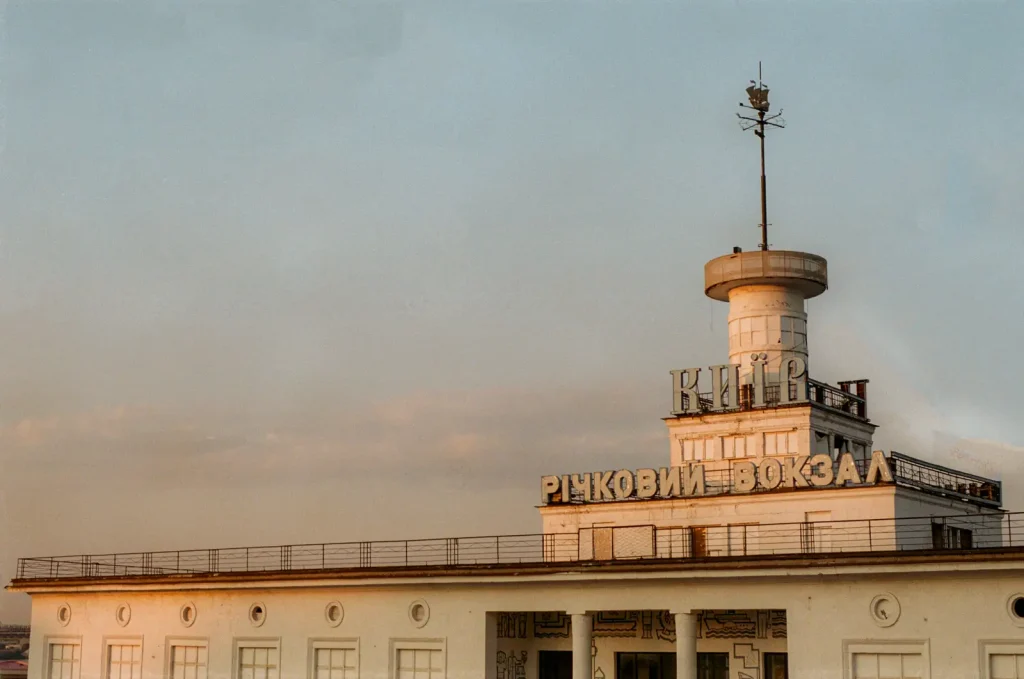
For my hands the OM-2n is a perfect match, it is easy to hold and easy to carry. I like to take the OM-2n everywhere I go, so I decided to make a paracord wrist strap, and it works fine. I leave the camera hanging on my wrist ready to shoot while wandering through a city. When I am commuting or just strolling without intention to make a photo, I put the camera in a waist bag. There’s still room to keep my wallet there, too. One quick tip, if you don’t plan to take a photo soon, do not advance a lever, because I lost a couple of exposures because of my inattentiveness. It is frustrating, trust me.
All being said, I still wish Olympus OM-2n were a bit smaller and lighter, but it is a high-end SLR camera and you get every feature you need and more in a small form-factor.
Is it any good for taking a photo?
If now you are thinking: “ok, you got me with looks, but is it any good photo-wise?”, then let me walk you through the process of making a photo with the Olympus OM-2n.
Before that, however, I should mention that this is my first SLR camera, and so I can’t compare it to anything except my Superzoom 700XB, but that would be unfair to both of them.
I’ll start with a viewfinder, and my, it is something. I know it’s praised a lot among film enthusiasts, but I didn’t understand why until I saw it with my own eyes. The finder shows you 97% of the picture – much more than the Superzoom. Previously, I had to crop photos, but with the OM-2n, I see almost everything. I still crop some photos, but now it is intentional.
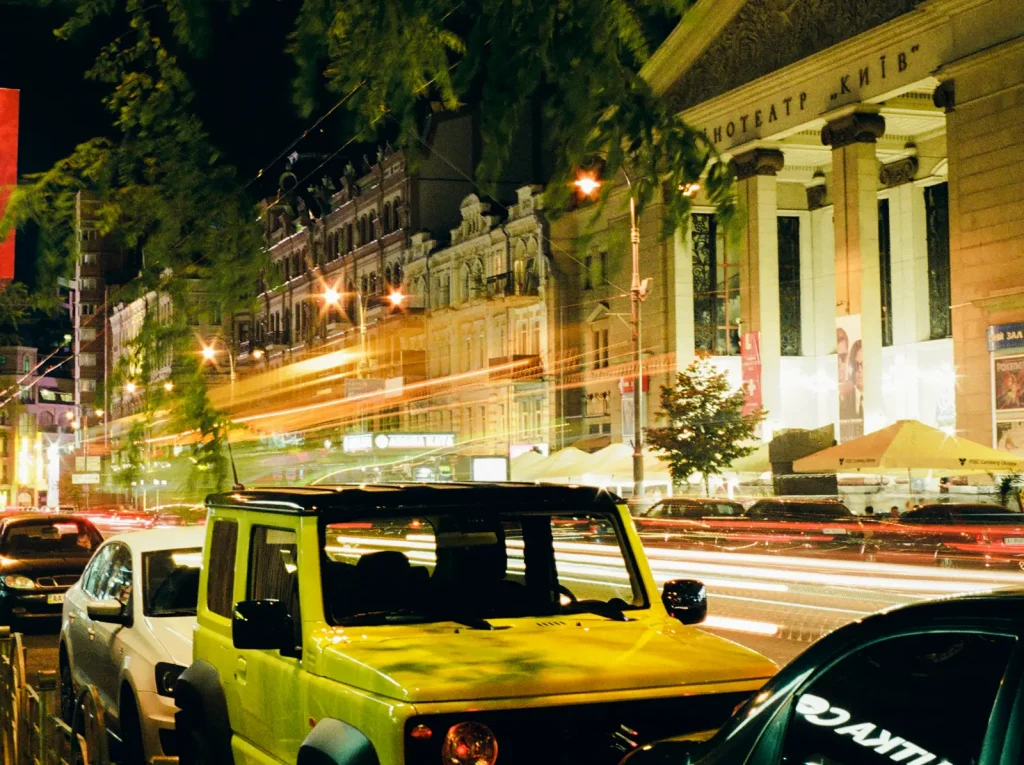
Using the Olympus OM-2n, I sometimes miss a decisive moment, but that is because I’ve found myself preferring to shoot in manual mode. I do this for two reasons: to slow down a process and to think about a photo, and to control the exposure. Unlike some people, I like where Olympus decided to put the shutter speed dial on the lens mount. I find it helps me make adjustments quickly.
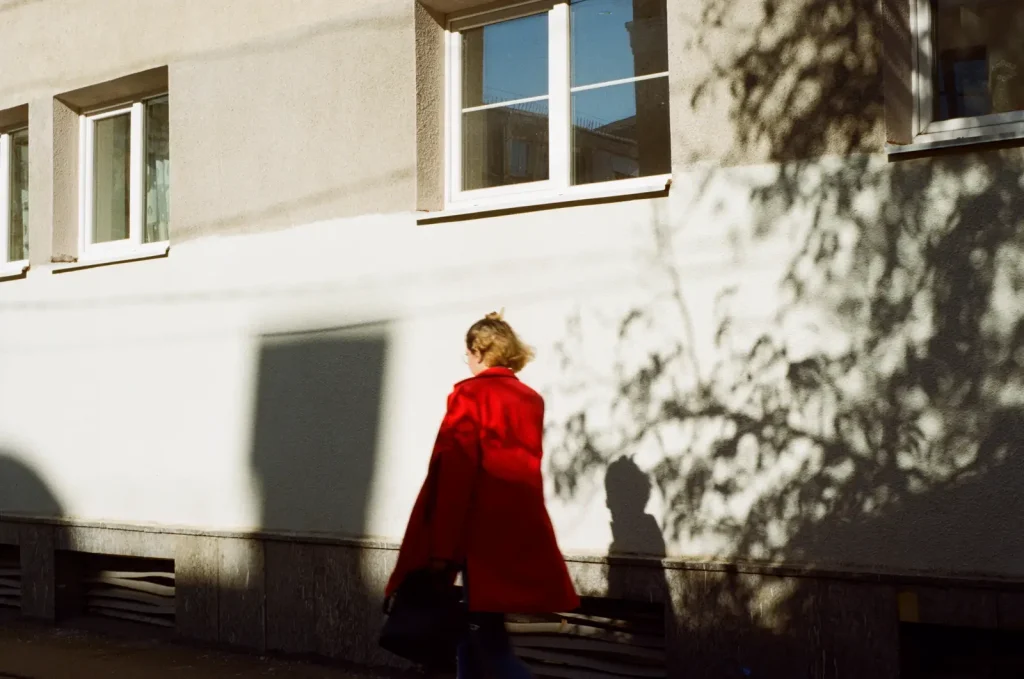
I like the quality of photos, even with the cheapest film stocks. My standard 50mm Zuiko f/1.8 is fun to use either for street photography or portraits. Although the latter from time to time gives me a headache. When I shoot with wide apertures, I can miss focus just a bit. Though it is worth trying – the bokeh looks great.
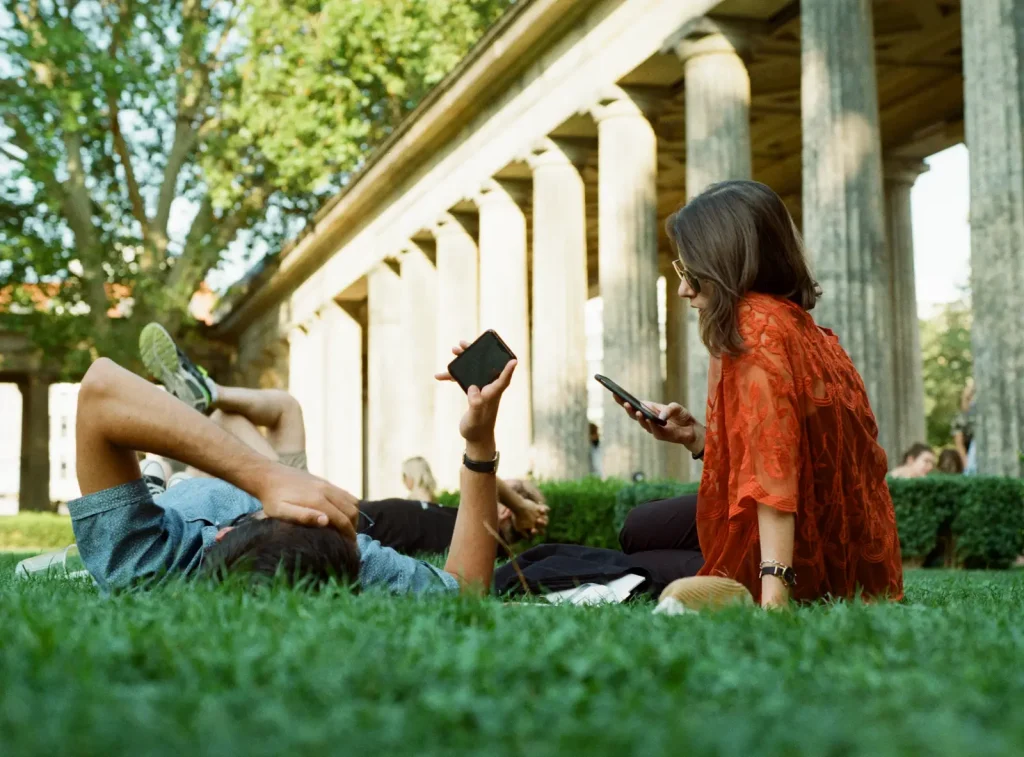
I mostly shoot in daylight or golden hours, but I also like the aesthetics of night photography and I tend to explore it. That’s where I appreciate that aperture priority mode my camera has. The OM-2n has a very good meter, it was the first of its kind. The light meter takes reading reflected off the film plane, and the shutter can stay up for about 120 sec. For now, I fully rely on it for night photography and have had reliably good results.
However, I admit that night photos are sometimes a miss from where I wanted them to be. I would like to have them a bit darker. They are not bad, but, you know, not fully “my style”. In the nearest future, I intend to make some manual exposures and compare them with auto exposures.
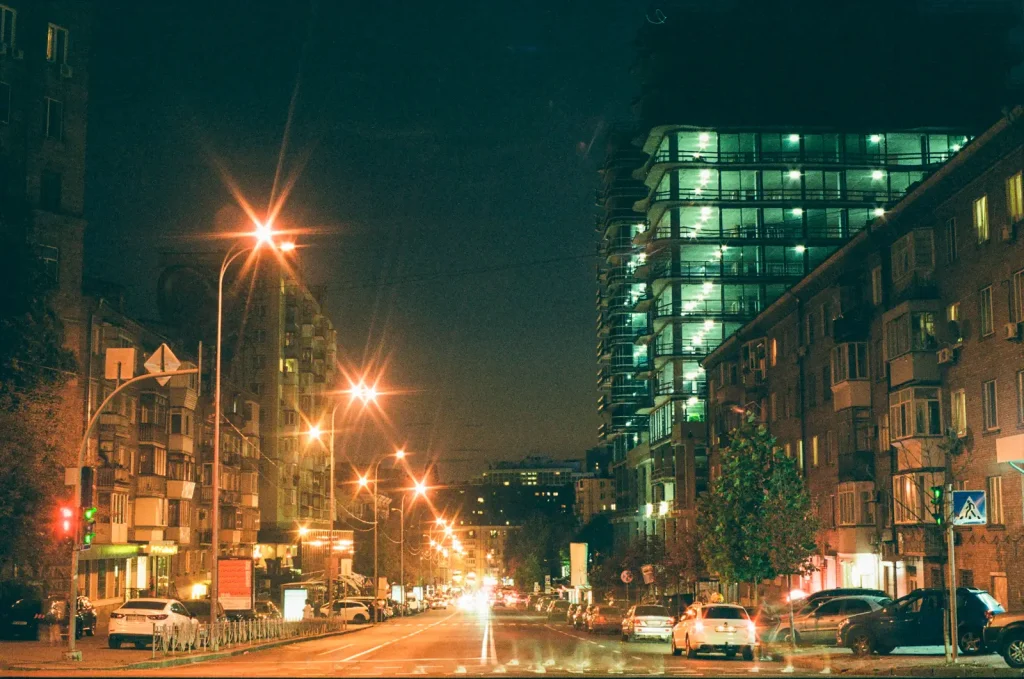
Is this my (anyone’s) final camera?
Before deciding to write this review, I never really thought about my Olympus OM-2n that much – mostly because it is easy and super fun to use. Great lenses, great viewfinder, astonishing looks, you name it. It’s not a flawless camera, unfortunately, but I think, its upsides are much bigger than the downsides. For now, OM- 2n is a go-to every day and every night camera for me.
Will it be my last film camera? I doubt it. As I am more into street photography, I would like to get Olympus XA and probably Pen F, just to play with 72 exposures. However, I think I got my first and the last SLR, there is just no point in switching to something else,
And a couple of photos.
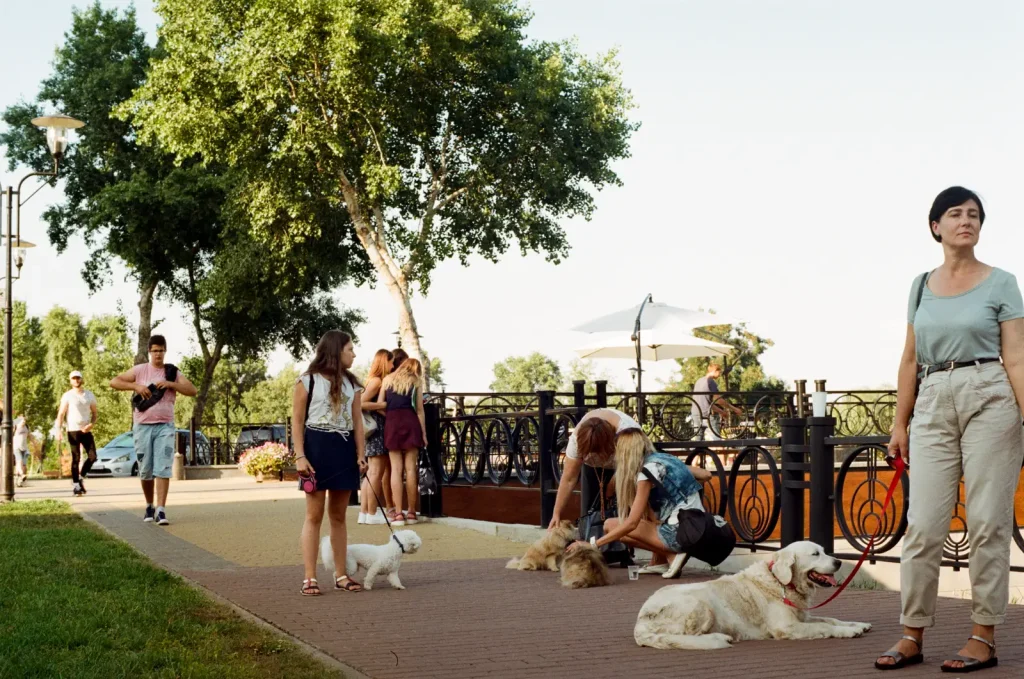
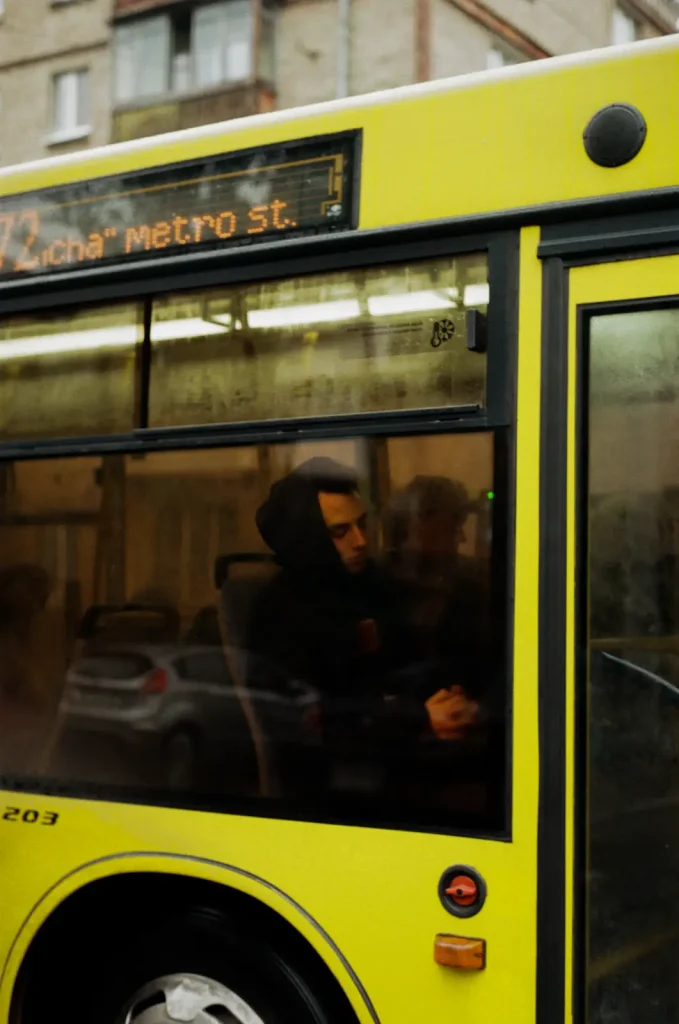
I love to use film to document the streets of my hometown and sometimes other cities. If you would like to see some other work made by this gorgeous Olympus OM-2n, please welcome to my Instagram @octo_ivans
Ivan Studynskyi
Share this post:
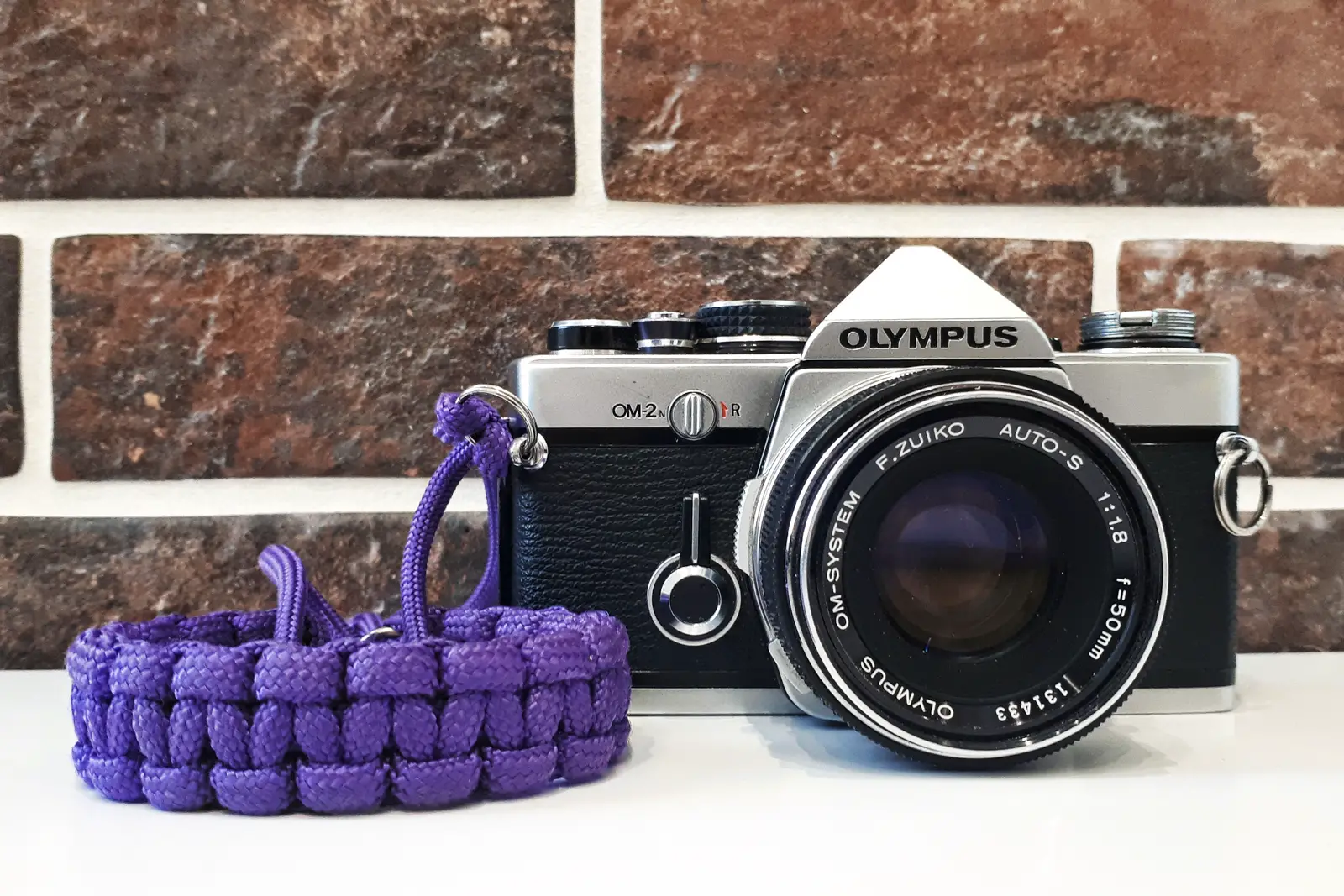








Comments
MrSnappy on Olympus OM-2n – My First SLR Film Camera Review – Ivan Studynskyi
Comment posted: 27/11/2019
I've enjoyed looking at your photographs on this post and also those on Instagram. They have (for me) an indefinable quality that prompts me to keep returning to them - I'm obviously looking with my heart rather than my head which is what photography should be about rather than what lens or what camera. If you are thinking about a compact from the XA series then I would go for the XA1 every time. The XA is too fiddly - check out my post on the XA1 from last week.
Comment posted: 27/11/2019
steve phillips on Olympus OM-2n – My First SLR Film Camera Review – Ivan Studynskyi
Comment posted: 27/11/2019
Comment posted: 27/11/2019
CharlesMorgan on Olympus OM-2n – My First SLR Film Camera Review – Ivan Studynskyi
Comment posted: 27/11/2019
Comment posted: 27/11/2019
J. on Olympus OM-2n – My First SLR Film Camera Review – Ivan Studynskyi
Comment posted: 28/11/2019
Some thing about the night photos not turning out quite the way you want them: I guess this involves a few variables. At first, your camera in Auto mode wants an even exposure. Nights are mostly dark, though. Try metering for the illuminated areas (city or traffic lights) and see where you can get from there. Then there is the film processing part. If you're simply dropping your film off at a drugstore, it will be developed and scanned more or less automatically. The machine (just as your camera) will go for an even exposure and for mostly black nights, that means they will turn out grey. You can either try to fix the files in post, scan the negatives yourself or go to a lab where they'll do custom scanning/printing, which will cost a bit more but might be worth it for some predetermined keepers.
Good luck on your film journey!
Dan on Olympus OM-2n – My First SLR Film Camera Review – Ivan Studynskyi
Comment posted: 10/12/2019
Comment posted: 10/12/2019
Jeremy on Olympus OM-2n – My First SLR Film Camera Review – Ivan Studynskyi
Comment posted: 27/09/2021
Here's a tip for getting those night shots a bit darker: turn exposure compensation down a couple stops. Your lab may STILL try to compensate that to an average exposure when scanning, not knowing that you want it to look dark. I think your next step in film photography should be to do your own developing & scanning. After not too many rolls of film, you'll find it pays for itself. The only hard part is color correction. If you want to shoot B&W, it is different chemistry, but there is no color correction to deal with.
I develop C-41 color at home, it's not hard once you control the temperature properly with an inexpensive sous vide cooker in a big stock pot of water. Then, scan with a Kodak Slide N Scan. (which can also scan slides and B&W negative film) It color-corrects automatically. Output quality is good, but not as good as lab scans. However, YOU control the exposure of the scan, not the lab's computer, which assumes every shot is average and will ruin snow shots and nighttime shots.
Michael S. Goldfarb on Olympus OM-2n – My First SLR Film Camera Review – Ivan Studynskyi
Comment posted: 16/01/2022
I had my sister's 28 on loan for 15 years, and it was a great performer. I gave it back to her when a friend gave me a Zuiko 24/2.8. It's also a great lens... but frankly I miss the 28, which was plenty wide but with barely a trace of distortion. The 24 is wider... and it distorts a lot more.
And the 100/2.8 is an awesome lens for portraits and isolating details. It compares favorably with the uber-famous Nikkor 105/2.5 I've been using since the 1960s, but at around half the size/weight.
You 'll get great images out of both of these lenses. (I'm also fond of the Zuiko 35/2, which I use as a normal lens. Not a fan of 50mm lenses.)
Peter H on Olympus OM-2n – My First SLR Film Camera Review – Ivan Studynskyi
Comment posted: 23/08/2024
Your photo of the lady in red on the street is great, and the one of the couple on the grass lookin at their phones is excellent too. It reminds me of HCB's shot of the family picnic from behind, with the guy pouring wine into a glass. The guy sleeping on the bus is brilliant too. so representative of modern life. well done. keep up the SLR film work and I hope you get a 4Ti one day also.